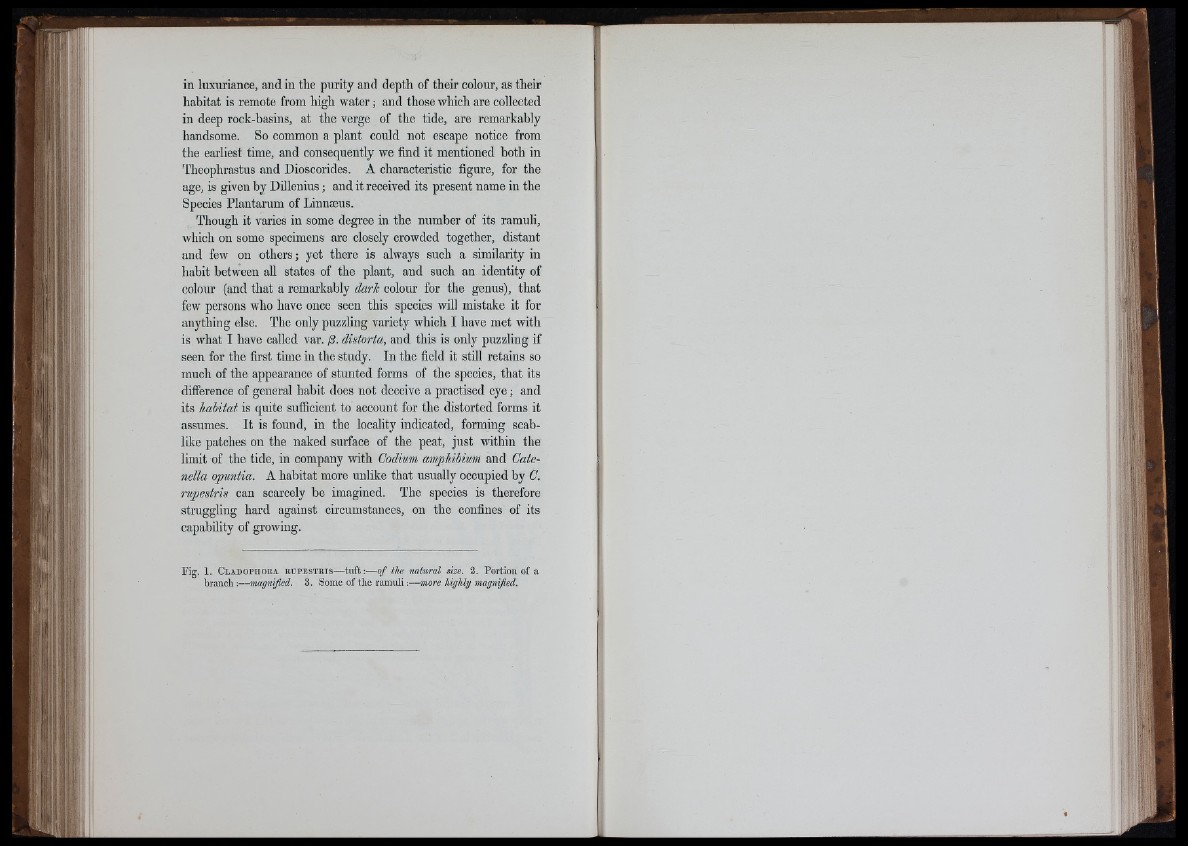
îfl '
k i ::
lI-Î
k :
ni
fJ oli
in luxxu’iance, and in the purity and depth of their colour, as their
habitat is remote from high water ; and those which are collected
in deep rock-basins, at the verge of the tide, are remarkably
handsome. So common a plant could not escape notice from
the earliest time, and consequently we find it mentioned both in
Theophrastus and Dioscorides. A characteristic figure, for the
age, is given by Dillenius ; and it received its present name in the
Species Plantarum of Linnæus.
Though it varies in some degree in the number of its ramuli,
which on some specimens are closely crowded together, distant
and few on others ; yet there is always such a similarity in
habit between all states of the plant, and such an identity of
colour (and that a remarkably dark colour for the genus), that
few persons who have once seen this species will mistake it for
anything else. The only puzzling variety which I have met with
is what I have called var. ¡3. distorta, and this is only puzzling if
seen for the first time in the study. In the field it still retains so
much of the appearance of stunted forms of the species, that its
difference of general habit does not deceive a practised eye ; and
its habitat is quite sufficient to account for the distorted forms it
assumes. It is found, in the locality indicated, forming scablike
patches on the naked surface of the peat, just within the
limit of the tide, in company with Codium amphibium and Cate-
nella opuntia. A habitat more unlike that usually occupied by C.
rupestris can scarcely be imagined. The species is therefore
straggling hard against circumstances, on the confines of its
capability of growing.
iYfit:.|
■ff
m if
g. 1. Cladophora ru pe str is—tu f t:-—o f the
branch :—magnified. 3. Some of the ramuli
size. 2. Portion of a
■more highly magnified.
li I.